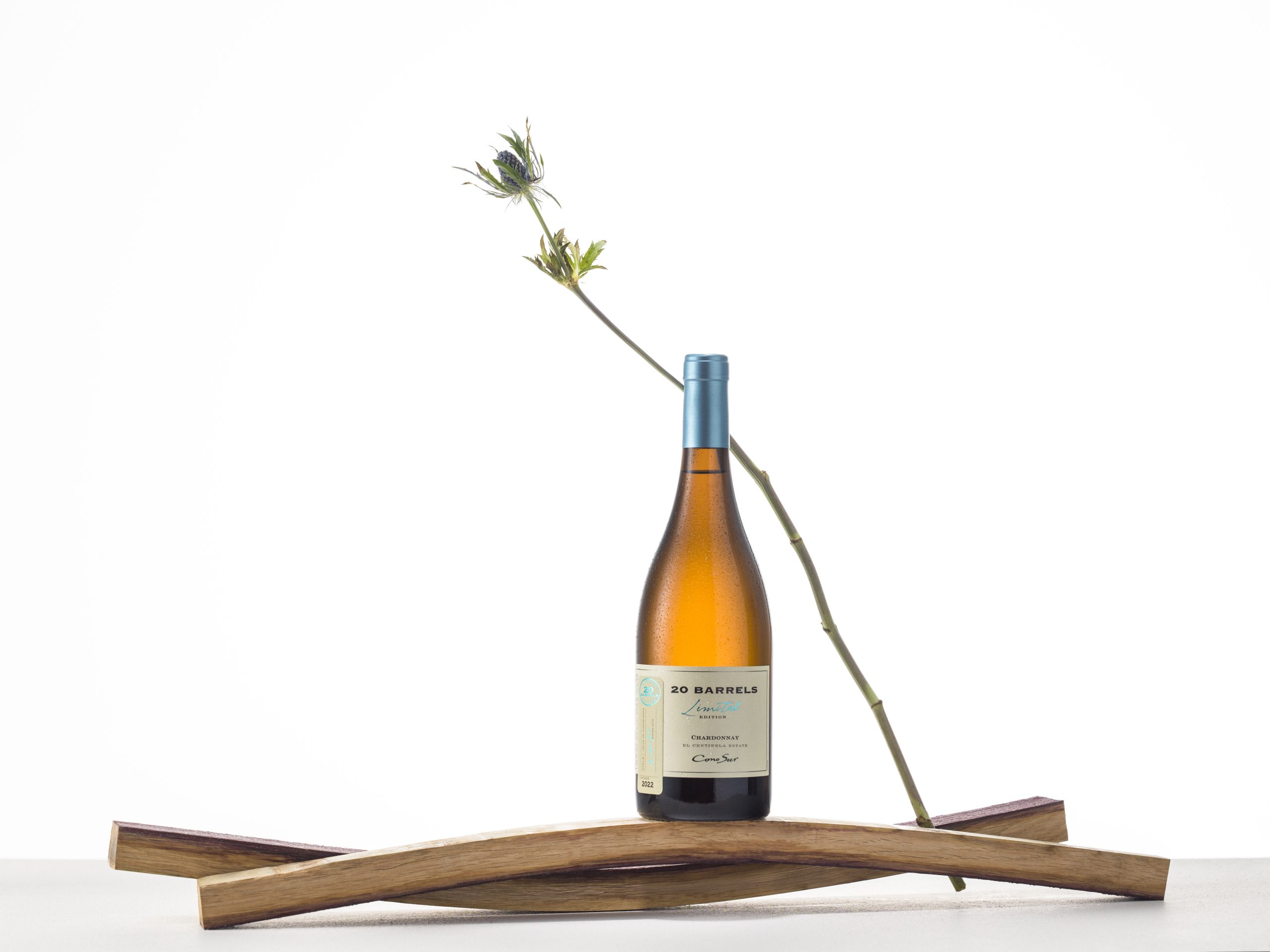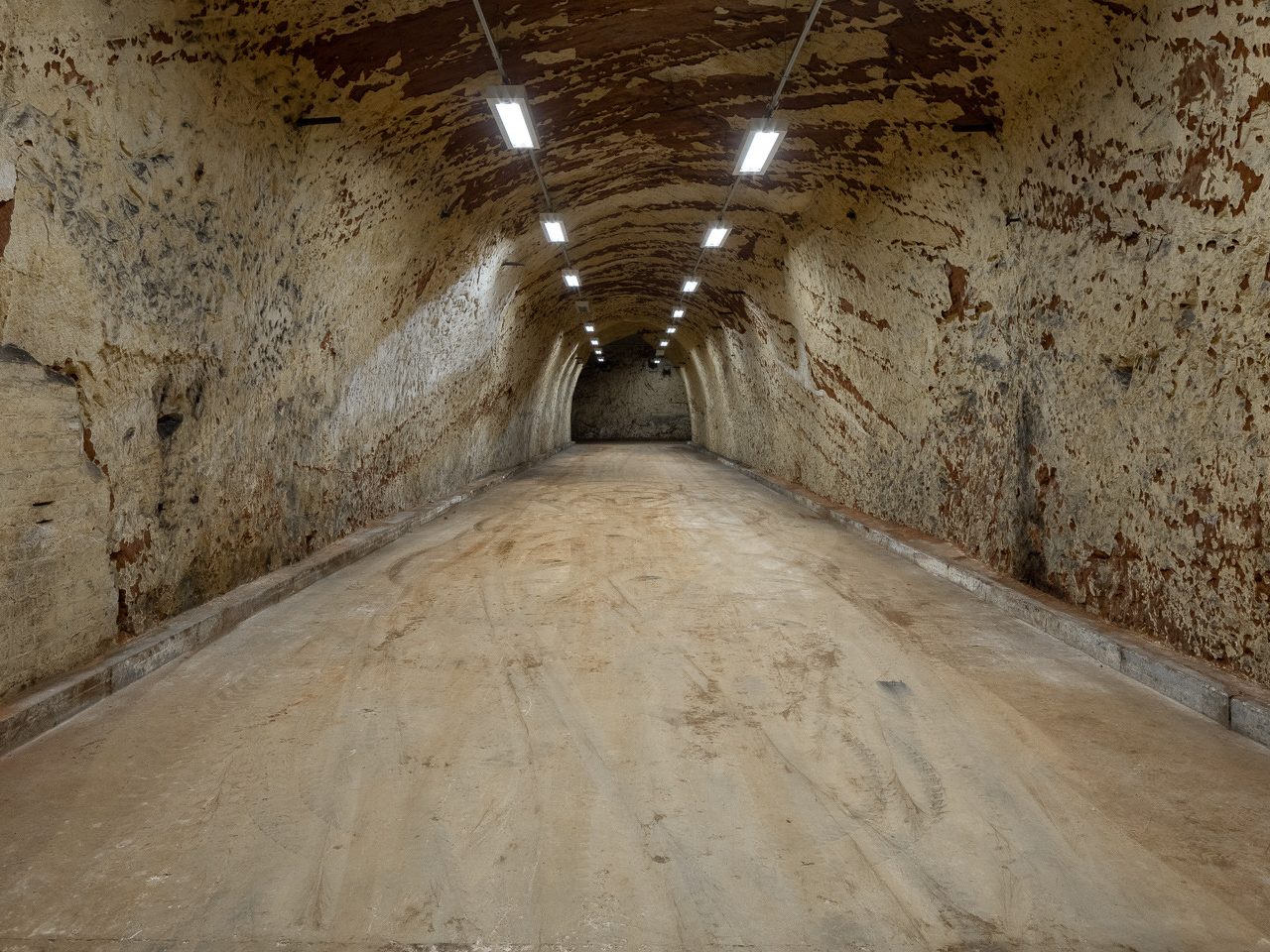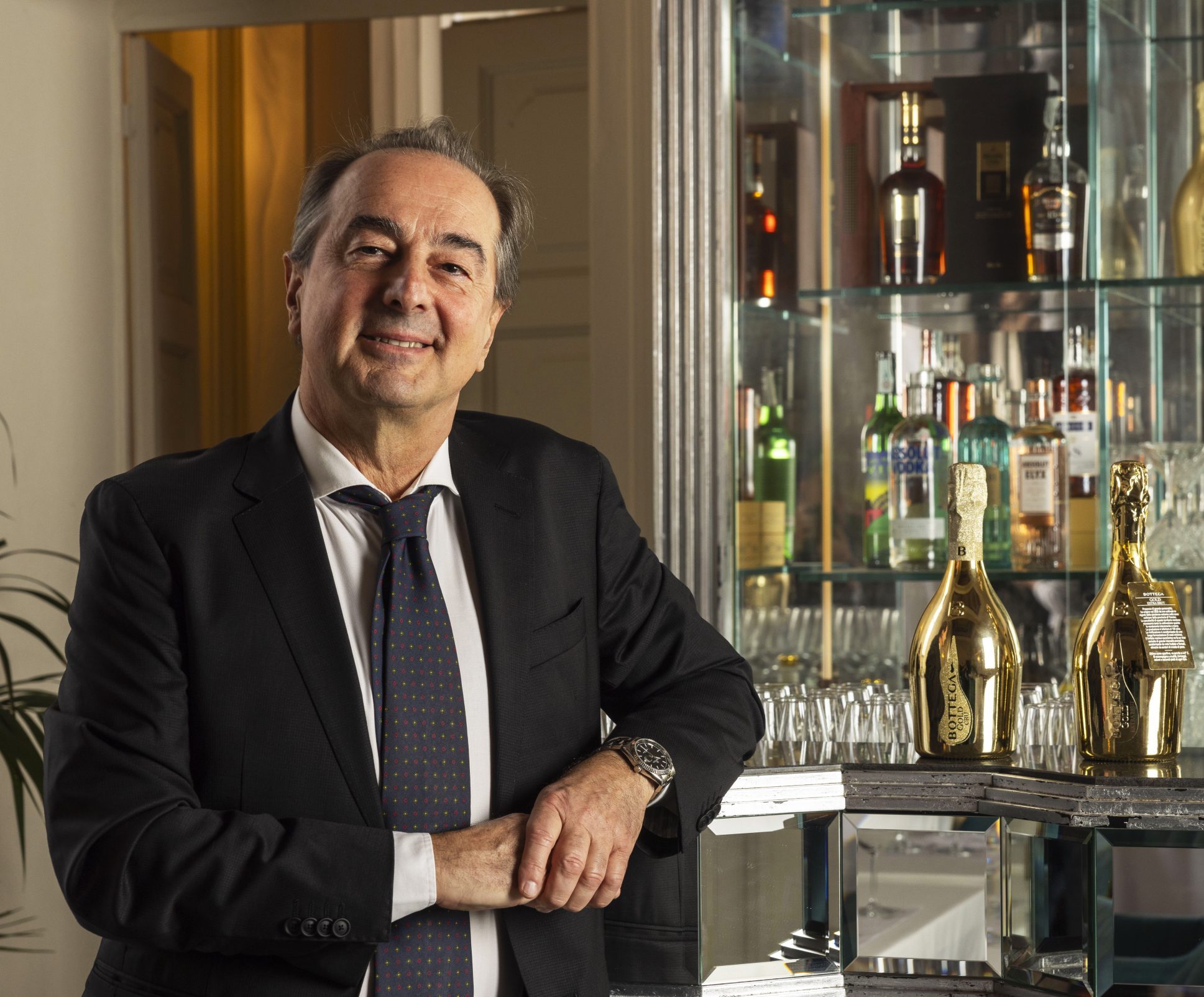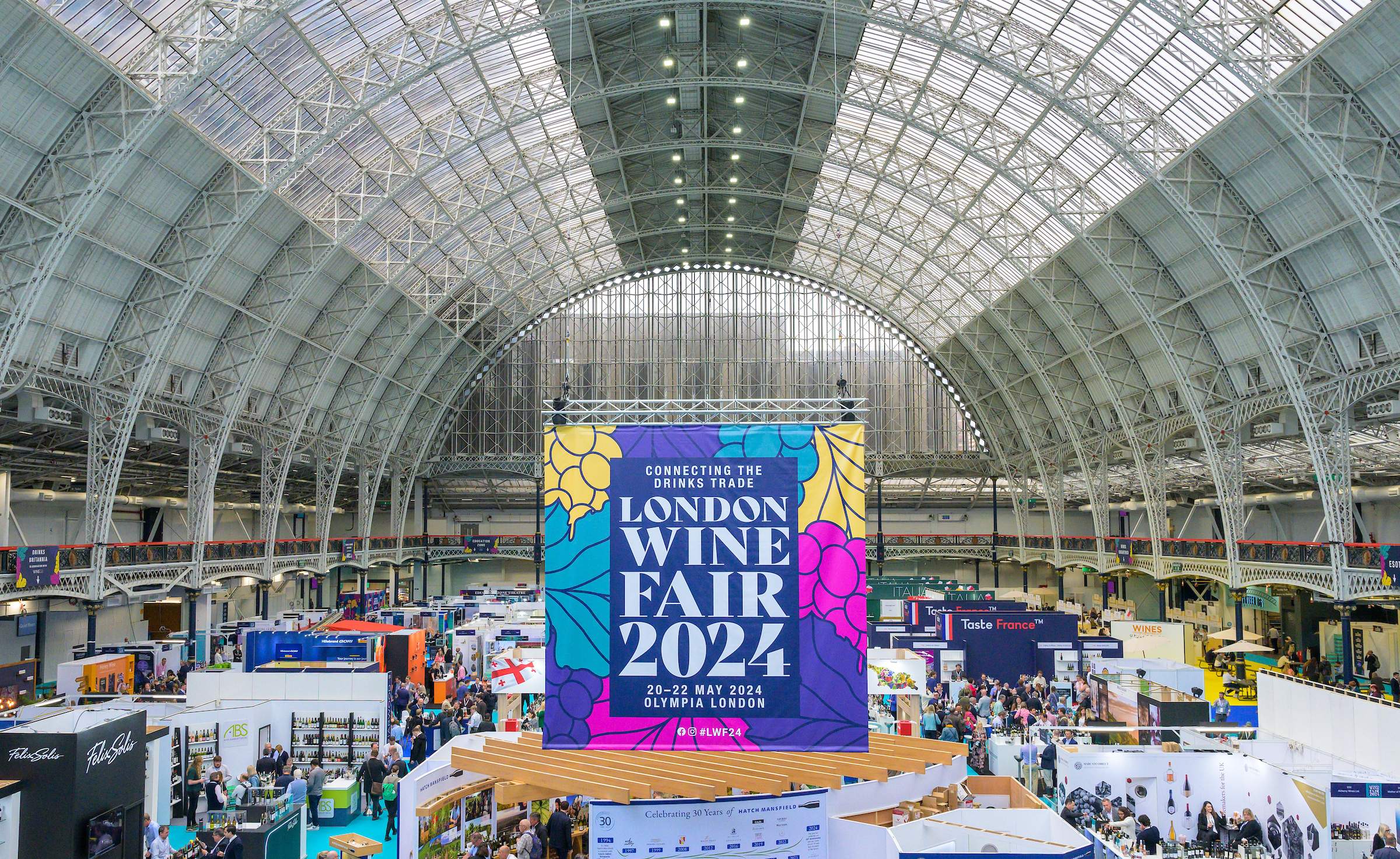This website uses cookies so that we can provide you with the best user experience possible. Cookie information is stored in your browser and performs functions such as recognising you when you return to our website and helping our team to understand which sections of the website you find most interesting and useful.
Chile masterclass report: on the cutting edge
With all types of terroirs, Chile offers up some fascinating wines. A recent seminar, staged by db, showed just how exciting a country it is. Patrick Schmitt MW reports
Cutting-edge Chile – The Don Maximiano Icon Winery in Aconcagua
When it came to choosing a title for a tasting and masterclass on Chile in February, there were many descriptors that could have been used for the event, which was organised by the drinks business for a UK audience. But after some thought, it was decided to call the London showcase ‘Cutting-edge Chile’, and this was for two reasons. One related to the fact that many of the wines chosen for pouring and presenting at the half-day event had never been shown in the UK before, or had yet to find representation. The second concerned the idea that Chile, as a wine-producing country, is at the cutting-edge: indeed, it is one of the most pioneering winemaking nations in the world.
Chile has a raft of cool coastal climates, which, like California, are chilled by morning fogs. It also has far more hectares of historic bush vines than South Africa, and Chile’s old vines are some of the oldest in the world. Furthermore, it is a county rich in volcanic landscapes, featuring as many as 500 active volcanoes. Then there’s Chile’s ideal conditions for organics, and emerging natural wine movement, which can rival anything from the Loire, as can the South American nation’s citrus scented Sauvignons. And Chile is also proving adept with Syrah, using its granitic soils and cooler climates to create something pleasingly spicy.
On top of this, because Chile has never suffered from the root-eating pest, phylloxera, it contains a wealth of historic vines and a clutch of the forgotten varieties of Europe. In short, it is a country that could excite anyone who is interested in all of today’s fashionable types of wine.
Despite travelling to the country on an annual basis for the past decade, last November I was lucky enough to be part of a Master of Wine tour of the country, which helped me discover what was cutting edge from Chile. Pulled together for 30 MWs by Chile’s top winemakers and viticulturists, the seven-day tour of the country featured 10 seminars.
As part of these, attendees sampled almost 300 wines, which comprised the best of Chile’s current offer, along with serves from its most novel projects. It was a carefully curated set of events and thematic tastings, and it was from these that I pulled together my own selection for the UK audience. These wines weren’t simply my favourites, but samples selected to represent Chile’s key strengths.
So in two masterclasses, I presented pours to fit with six topics, starting with ‘Cool-climate Chile’. Below, I have reproduced the wines that were served, and the key points made in the masterclasses.
Cutting-edge Chile – Tasting the latest in London on 3 February
1. Cool climate Chile
The wines:
Concha y Toro, Amelia Chardonnay 2018, Limarí Valley
Winemaker: Marcelo Papa
Cono Sur Reserve Especial Riesling 2019, Bío Bío Valley
Winemaker: Matías Ríos
Luis Felipe Edwards, Marea Sauvignon Blanc, 2019, Leyda Valley
Winemaker: Nicolas Bizzarri
Veramonte, Ritual Chardonnay, 2017, Casablanca Valley
Winemaker: Sofia Araya
The notes:
There are three factors to consider for cooler climates in Chile.
A. Latitude: Producers can head south to find chillier conditions, and Chile’s most southerly vineyard, which is owned by Undurraga, is located 1,250 miles south of Santiago. At 46 degrees latitude, the planting – which is in the Chile Chico region – is one degree further south than Central Otago. This makes it not just Chile’s most southerly vineyard, but the most southerly planting in the world.
B. Ocean influence: Chile has South America’s coldest coastline, with an average water temperature in the Pacific of 16ºC. The Humbolt Current brings cold water from the Antarctic up to the far north of Chile. The ocean influence means that even an area in the north of the country, such as Limarí, which is on the edge of the Atacama, the driest non-polar desert in the world, has a cool climate. Even warmer and more inland locations like Casablanca experience the moderating influence of the Pacific, as fog can roll inland by as much as 30km.
C. Altitude: Because the Andes mountains rise very steeply on the Chilean side, developing mountain viticulture can be difficult, but cool air from higher climes acts as an air conditioner on the vines beneath. There are examples of high-altitude vineyards, however, such as Viñedos de Alcohuaz, named after a town high up in the Elquí Valley, where vineyards were planted between 2005 and 2009 at 2,200m above sea level – or a Merlot from more than 1,200m in Curicó, which was served later in the masterclass.
A concluding point on climate: In Chile, the coolness of the nights, even during the height of summer, is a very important factor. For example, in March, Casablanca has an average night-time temperature of 8ºC, which helps keep acidity and colour in the wines. A warm region such as Maipo is Winkler Zone 2, but the nights are cool, 10ºC on average, which is similar to the recognised cool climate region of Leyda, but while Leyda is close to the ocean, Maipo is close to the Andes.
Chile is home to País that is over 200 years old
2. Old vine Chile
The wines:
Santa Rita Floresta Field Blend Blanco 2018, Apalta, Colchagua
(70-year-old vineyard containing Sémillon, Sauvignon Vert, Moscatel, Torrontés, and Corinto)
Winemaker: Sebastián Labbé
Clos de Luz, 1945 Carmenère, Almahue, Rapel Valley, 2017 (75-year-old vineyard)
Winemaker: Felipe Uribe
Valdivieso Vigno, Melozal Vineyard, Secano Interior, Maule, Carignan 2018 (60-year-old vineyard)
Winemaker: Brett Jackson
The notes:
There are two steps in the history of Chilean viticulture, with the first relating to the arrival of the Spanish conquistadors in 1492, who brought with them Listán Prieto, known as Mission in North America, and which was renamed País in Chile in the 1850s. The second part starts in 1850 with the arrival of the French, who brought Cinsault, Carignan, Malbec, Sémillon and so on.
Today one can find País that is over 200 years old. The likes of Cacique Maravilla and Pipeño País comes from a vineyard in the Bío Bío Valley that was registered in 1776, and is still in the same family.
Vigno is the name of an association formed in 2011 to unite producers of old vine, dry-farmed Carignan from Maule. Carignan was widely planted there about a decade after a large earthquake in 1939. The idea was that Carignan would bring acid, colour and structure to simple country wines.
Carmenère arrived on shipments of vines from Bordeaux, believed to be Merlot, in the 1800s in the Alto Jahuel region of the Maipo Valley. It was planted by viticulturists at Viña Carmen, which was founded in 1850. After the devastation of phylloxera in the 1850s throughout Europe, it was thought that the Carmenère grape variety was extinct.
It was not until 24 November 1994 that French ampelographer Jean Michel Boursiquot identified Carmenère vines, previously thought to be Merlot, growing in Viña Carmen’s Alto Maipo vineyards.
Curicó’s highest vineyard is found deep within native forest on the Montes Obscuro at 1,245 metres above sea level
3. Original/Extreme Chile
The wines:
J. Bouchon País Salvaje, Maule, 2018
(Made from over 100-year-old ‘wild’ vines that are supported by trees)
Winemaker: Christian Sepulveda
Ventisquero, Tara Chardonnay, Atacama Valley, 2018
(From a vineyard planted in the Atacama desert in 2007).
Winemaker: Felipe Tosso
Aresti, Trisquel Series Altitude Merlot 2017
(From Curicó’s highest vineyard within native forest on the Montes Obscuro at 1,245m above sea level)
Winemaker: Jon Usabiaga
The notes:
Much of the ‘original’ Chilean viticulture can be seen, unchanged, in the Itata Valley. This is where the first vines were planted in the country in 1551, and where growers still use a very low gobelet training system known as ‘cabeza’.
According to Leonardo Erazu, who makes wines from ancient vineyards in Guarilihue, a sub region of Itata, under the label ‘Rogue Vine’, this is the largest area of ungrafted vines in the world (although land is cheap at US$10,000/ha).
Roberto Henríquez, who makes wine under a label by the same name, said that these ancient vines were not only part of the “tradition, culture and history of Chile”, but also, “A museum for viticulture.”
Aside from looking to its past and rescuing old vines such as those found in Itata, Chilean vintners are also going to extremes, planting at the limits of viticulture, be it in the far south, or north – such as the Atacama desert – as well as closer to the coast, or, increasingly, high up in the Andes mountains.
Chile is a country rich with unsullied natural landscapes
4 Green Chile: Biodynamic/organic wine
Partner Content
The wines:
Matetic, EQ Granite, Biodynamic, Casablanca Valley, Pinot Noir, 2015
Winemaker: Julio Bastias
Emiliana Vineyards, Gê, Biodynamic, Colchagua 2015
Blend: 37% Syrah, 37% Carmenère, 18% Cabernet Sauvignon, 4% Garnacha, 2% Malbec, 2% Mourvèdre
Winemaker: Noelia Orts
The notes:
Chile is a country with unsullied natural landscapes. “We have endemism, pristine environments, dry conditions – Chile is ideal for viticulture,” believes Luca Hodgkinson, who runs a consultancy firm for organic and biodynamic projects in Chile and Spain called Wildmakers.
With such perfect conditions, Hodgkinson is saddened that anyone should be using herbicides, and he is establishing a new association for low-intervention wineries in Chile, which is due to launch under the name ‘Chile Desnudo’, translating as ‘naked Chile’.
The country, with its historic dry-farmed bush vines in areas like Itata is home to ready-made ‘natural wine’, as the farmers in these parts of Chile are too small and poor to afford chemical inputs and machinery, so everything is, and always has been, done by hand and horse.
Some of Chile’s most delicious wines are coming from the combination of Syrah, granitic soils, and Mediterranean climates
5 Mediterranean Chile: Syrah (climate and granite)
The wines:
Undurraga, TH Syrah, Leyda Valley, 2016
(Cooler climate Syrah from granitic soils)
Winemaker: Rafael Urrejola
Lapostolle, Cuvée Alexandre Syrah, Colchagua Valley, 2014
(Semi-arid Mediterranean climate, biodynamically grown on grantic/clay subsoil).
Winemaker: Andrea León
The notes:
Some of Chile’s most exciting and delicious wines are coming from the combination of Syrah, granitic soils, and Mediterranean climates. Caliterra’s chief winemaker, Rodrigo Zamorano, says: “We are seeing more Mediterranean varieties planted in Chile, such as Grenache, Mourvèdre and Carignan, and also some Tempranillo, as well as whites like Roussanne, because our climate and soil is more similar to the Rhône than Bordeaux.”
As a sign of this trend, some of the more high-profile products and producers include Errázuriz, which makes a Rhône-inspired red blend of Shiraz, Grenache and Mourvèdre, and a white with Roussanne, Marsanne and Viognier; Morandé, which has launched a Grenache called Mediterráneo del Maule; Caliterra, which has the Edicion Limitada M – standing for Mediterranean – containing Syrah and Viognier; Ventisquero, which makes a “Grey” GCM; Montes, which produces a Beyond Frontiers Outer Limits Apalta Vineyard CGM; and Undurraga, which has added a GCM from Cauquenes to its Terroir Hunter series.
Alto Maipo is the home to Chile’s most celebrated Cabernets
6 Classic Chile: Cabernet
The wines:
Maquis, Franco, Cabernet Franc, Colchagua Valley, 2013
Winemaker: Ricardo Rivadeneira
Montgras, Intriga Maxima, Maipo Andes, 2015
Winemaker: Santiago Margozzini/Cristián Correa
The notes:
Cabernet Sauvignon forms the basis of Chile’s most celebrated wines. The grape’s ancestral variety, Cabernet Franc, can also produce wonderful results in Chile. Chile has 130,000ha under vine, and almost 100,000ha are red grapes.
Cabernet is 42,000ha, so almost half all red grapes planted. Chile has 14% of all the Cabernet in world. Second only to France with 19% (7% lie in China).
Alto Maipo/Maipo Andes: three subzones are home to Chile’s most celebrated Cabernets: Alto Jahuel (Casa Real, Perez Cruz), Pirque (Don Melchor), Puente Alto (Almaviva, Viñedo Chadwick).
Elsewhere, sources of great Cabernets are: Aconcagua (Don Max, Seña); Colchagua/Apalta (Lapostolle, Montes Taita); Cachapoal (San Pedro’s Sideral, Duque from Aristos); Curicó (Aresti and Torres).
The quality and style of Maipo Alto Cabernet, which is intense, with fine grained tannins, relates in particular to the free-draining rocky subsoil from alluvial origins, the large diurnal temperature variation in the area at 500-600m in foothills of Andes, and the source for irrigation water, which is the Maipo river. Because the river has its source at 5,000m altitude, it carries the highest percentage of calcium carbonate of any river in Chile.
The details: Cutting-edge Chile
The event was oversubscribed
Date: Monday 3 February 2020, 1pm-6.30pm.
Location: London, Asia House.
Organisers: Wines of Chile and the drinks business.
Called Cutting-Edge Chile, the half-day event comprised two free-pour tasting tables.
The first featured Chile’s new release wines, along with a selection of expressions that are completely new to the UK market, including those without UK representation.
The second showcased a selection of samples from Chile’s boutique producers, who are creating a real buzz in their domestic market. There will also be some wineries without UK representation.
Running alongside the tastings were two masterclasses by Patrick Schmitt MW.
Following a week-long tour of Chile at the end of last year, Schmitt presented a selection of samples to highlight the thrilling nature of Chile’s wine scene today.
The wines were chosen to fit the following themes:
1. Cool climate Chile
2. Old vine Chile
3. Original and extreme Chile
4. Green Chile
5. Mediterranean Chile
6. Classic Chile





